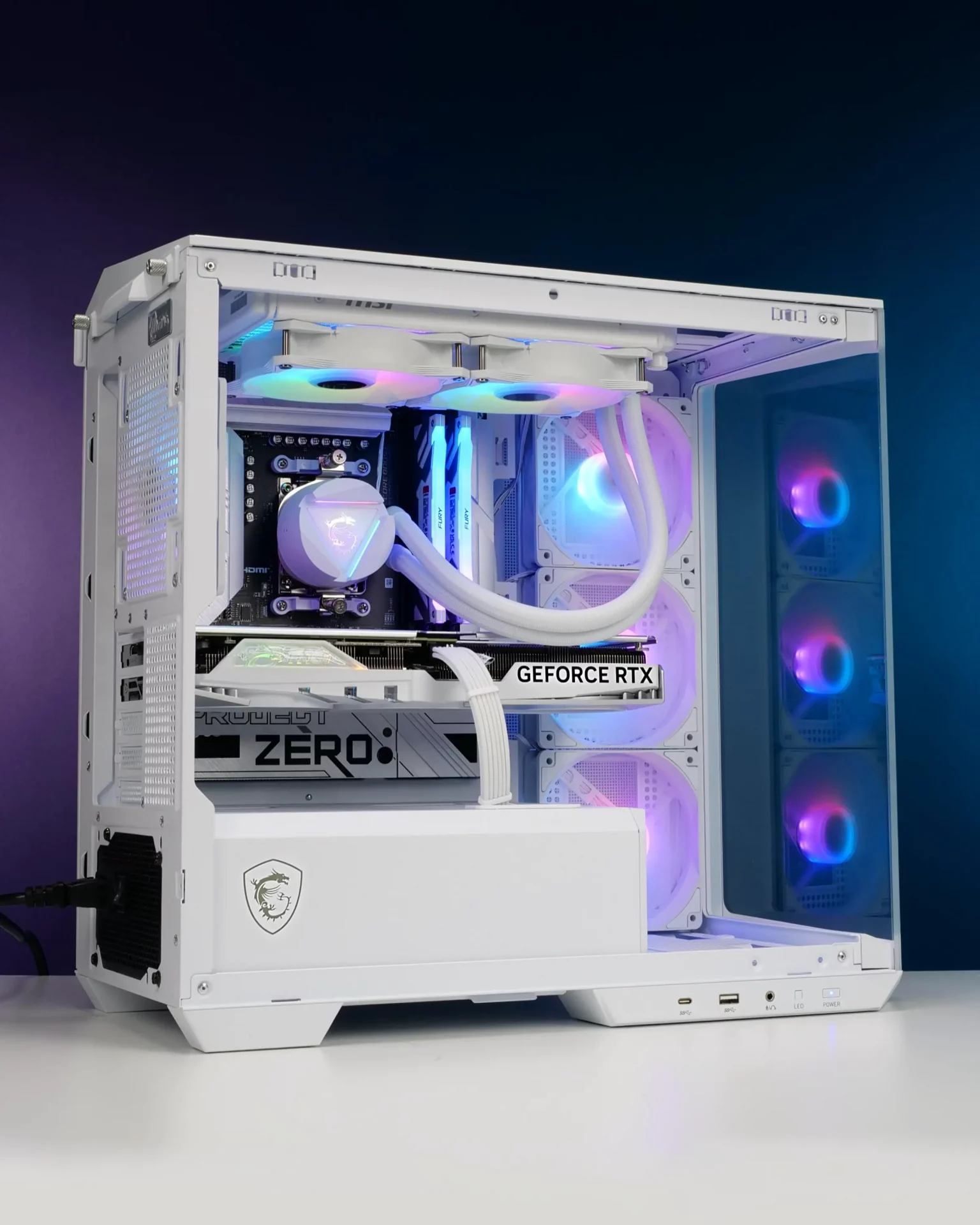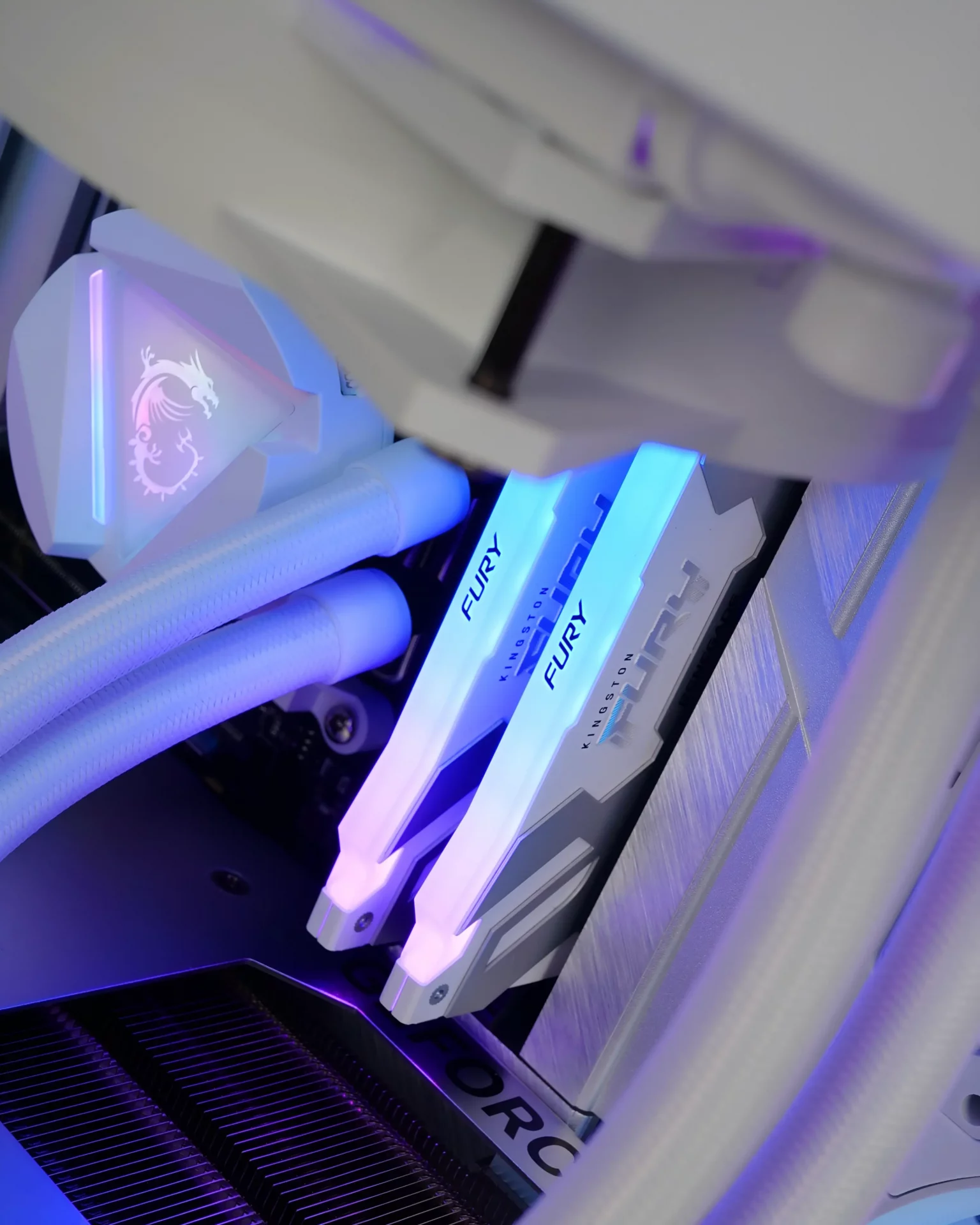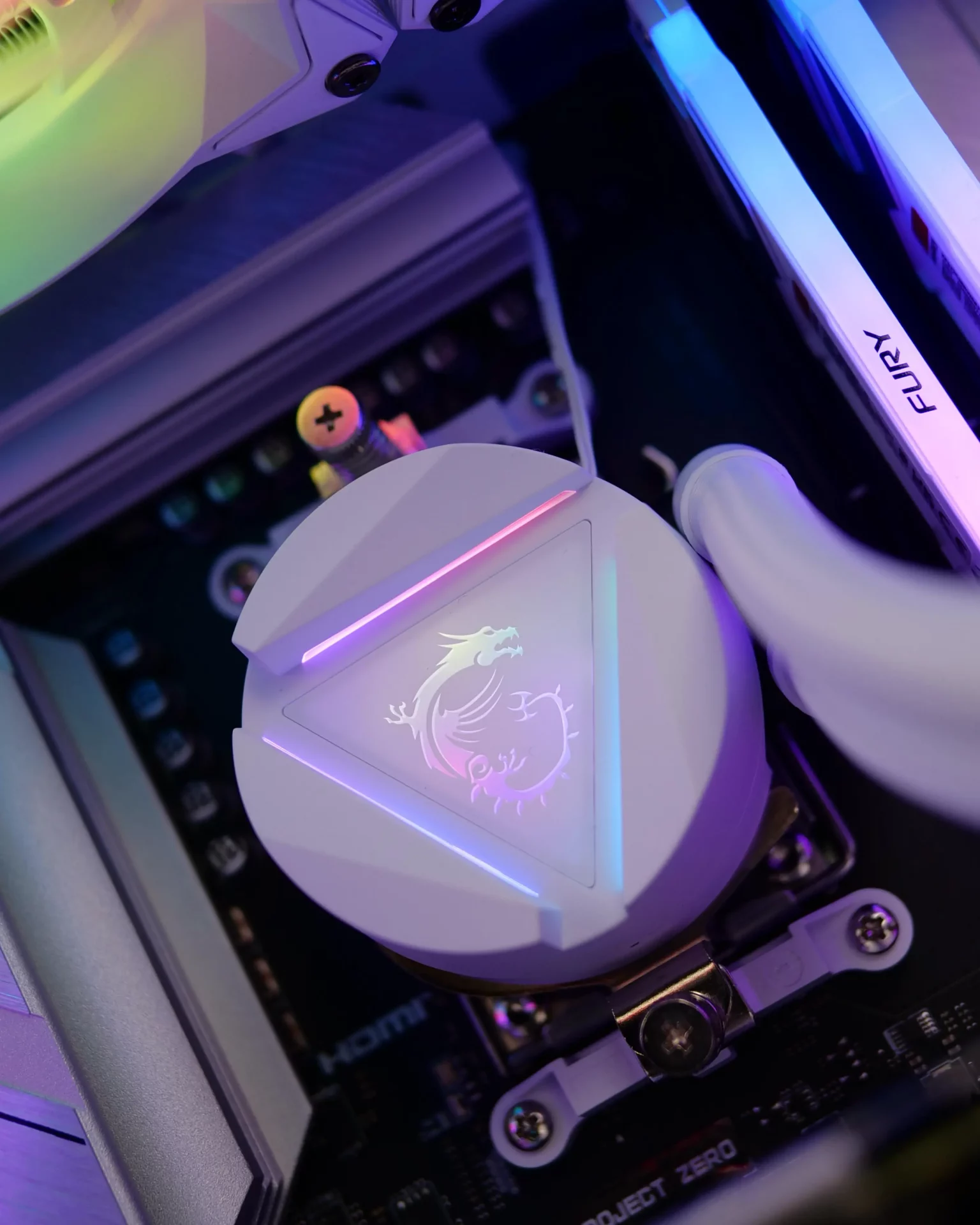Calling all builders seeking a clean aesthetic and stress-free experience! Today’s Breakdown tackles the innovative MSI PROJECT ZERO – a motherboard and case combo designed with minimalism and cable management mastery in mind. Does the PROJECT ZERO live up to the hype?
Buckle up as we dissect its features, build experience, and overall functionality. We’ll unveil the secrets of its “back-connect” design, explore the quality of the motherboard itself, and showcase stunning visuals of the build process. Stay tuned to discover if the PROJECT ZERO is the key to unlocking your dream PC’s sleek potential
First Impressions Of MSI Project Zero
A buzz of anticipation crackled through Battlerigs HQ as a hefty package from MSI arrived, bearing the cryptic “Project Zero” insignia. Eager to delve into the world’s first cable-concealing motherboard and case combo, we tore into the packaging with the reverence befitting a potential game-changer.
MSI clearly prioritizes a premium unboxing experience, evident from the moment the box arrived. High-quality cardboard, boasting a clean and minimalist aesthetic that mirrored the Project Zero branding itself, greeted us. This wasn’t your average cardboard shell – reinforced corners and thoughtful padding hinted at the potential for this packaging to endure the rigors of even the most aggressive shipping handlers (Not talking about anyone in particular DHL). It became immediately clear that MSI wasn’t just delivering a product; they were delivering an experience.
This meticulous attention to detail from the very first interaction instilled a sense of confidence – a feeling that the innovative technology and thoughtful design promised by Project Zero would be meticulously protected within.
Build Experience
Strapping in for the build itself, Project Zero lived up to its name in a way we didn’t quite anticipate. The “back-connect” design proved to be a revelation. Traditionally, cable management can be a frustrating hurdle, a tangled web of wires threatening to mar the aesthetics of even the most meticulously planned build.
Project Zero throws that struggle out the window. With all the motherboard’s connectors cleverly relocated to the back panel, accessible through a dedicated compartment, cable routing became a breeze. Gone were the days of wrestling with wires within the main chamber. Instead, a clean and organized look emerged effortlessly, a testament to the thoughtful engineering behind Project Zero. This innovative approach not only simplified the build process but also opened the door to a level of visual appeal previously unexplored in PC construction.
While Project Zero‘s “back-connect” design is a game-changer for traditional motherboard connectors, it’s important to acknowledge that complete cable invisibility remains elusive. Components like case fans, AIO coolers (All-in-One liquid coolers), graphics cards, and RGB lighting strips will still require some visible cabling. These typically connect directly to the components themselves or specific headers on the motherboard, regardless of their location.
However, Project Zero’s brilliance lies in significantly minimizing the usual spaghetti junction of cables within the main chamber. By relocating the motherboard connectors, you gain a significant advantage in cable management. The freed-up space allows for cleaner routing of the remaining cables behind the motherboard tray, where they can be tucked away and hidden from view. This dramatically improves the overall aesthetics of your build, even with the presence of these essential component cables.
When building in Project Zero, we found that it was extremely easy to route the cables to the required places, as the cable cut-outs allow for shorter cable runs, and better cable management. The positioning of the cable connectors has been well thought out by MSI, as the motherboard cable has a rather short run, allowing it to be expertly tucked away in the clear space in the bottom of the case.
Project Zero itself is compatible with a range of cases, with more being released every few weeks, however, if you’re planning on installing project zero into an existing case, you may have to check the specifications yourself, or create your own cable cut-outs for all of the connectors.
The only downside to Project Zero is the fact that it does not have a Graphics Card with a reverse connector on it, while this is not a major issue, it would be beneficial for MSI to release a version of their Graphics Card with reverse connectors for situations like this. Apart from that small downfall, the project itself is extremely well planned and thought out, with a range of different components supported out of the box. MSI has released 3 different project zero motherboards, including a Z790, B650, and B760, however, they would benefit from releasing a reverse connector Graphics Card, as it would create a totally cable-less aesthetic.



Our Build
Specs
Airflow
The MSI PANO 100 PZ, despite its name, isn’t actually compatible with standard ATX motherboards. It’s designed for Micro ATX (mATX) Project Zero boards from MSI. This unique case features a striking 270-degree panoramic view of your internal components through tempered glass panels.
While the aesthetics are a clear focus, MSI hasn’t skimped on airflow. The PANO 100 PZ comes with four pre-installed fans, one on the rear and three on the side panel. This design helps pull cool air in from the side and expel hot air out the back, promoting good ventilation for your Project Zero build.



Component Compatibility
MSI’s Project Zero initiative takes a unique approach to building a clean and aesthetically pleasing PC. The key lies in the motherboard design and compatible cases.
Project Zero Motherboards: These motherboards, currently available in the B650M chipset format, relocate most ports and connectors to the backside of the board. This eliminates the usual cable clutter on the front, making for a much cleaner view inside your case. They also boast features like USB Type-C front panel headers for connecting the latest devices.
Compatible Cases: While Project Zero motherboards will technically fit in standard ATX cases, to achieve the full cable management benefits, you’ll need a compatible case. MSI offers its own MAG Pano M100 PZ series in black and white, specifically designed for Project Zero’s back-connect layout. These cases feature strategically placed cable routing channels and cut-outs to hide cables behind the motherboard tray.
The good news is that Project Zero motherboards are also compatible with a wider range of cases from other manufacturers like Corsair, SAMA, Lian Li, as long as they offer sufficient space for the back-mounted motherboard connectors.
Verdict
MSI’s Project Zero is a breath of fresh air for PC builders seeking a clean and stunning aesthetic. We absolutely loved the look of the Project Zero motherboards, with their sleek design and back-mounted ports that banish cable clutter from the front. The pairing with MSI’s own Project Zero cases creates a truly stunning showcase for your PC components.
Project Zero isn’t just about looks, though. The back-mounted ports offer practical advantages for cable management and airflow. We were impressed by MSI’s commitment to a clean build experience. Project Zero has us excited to see what other brands bring to the table in the realm of cable-free PC design. We can’t wait to see how the industry pushes the boundaries of aesthetics and functionality in the future.






